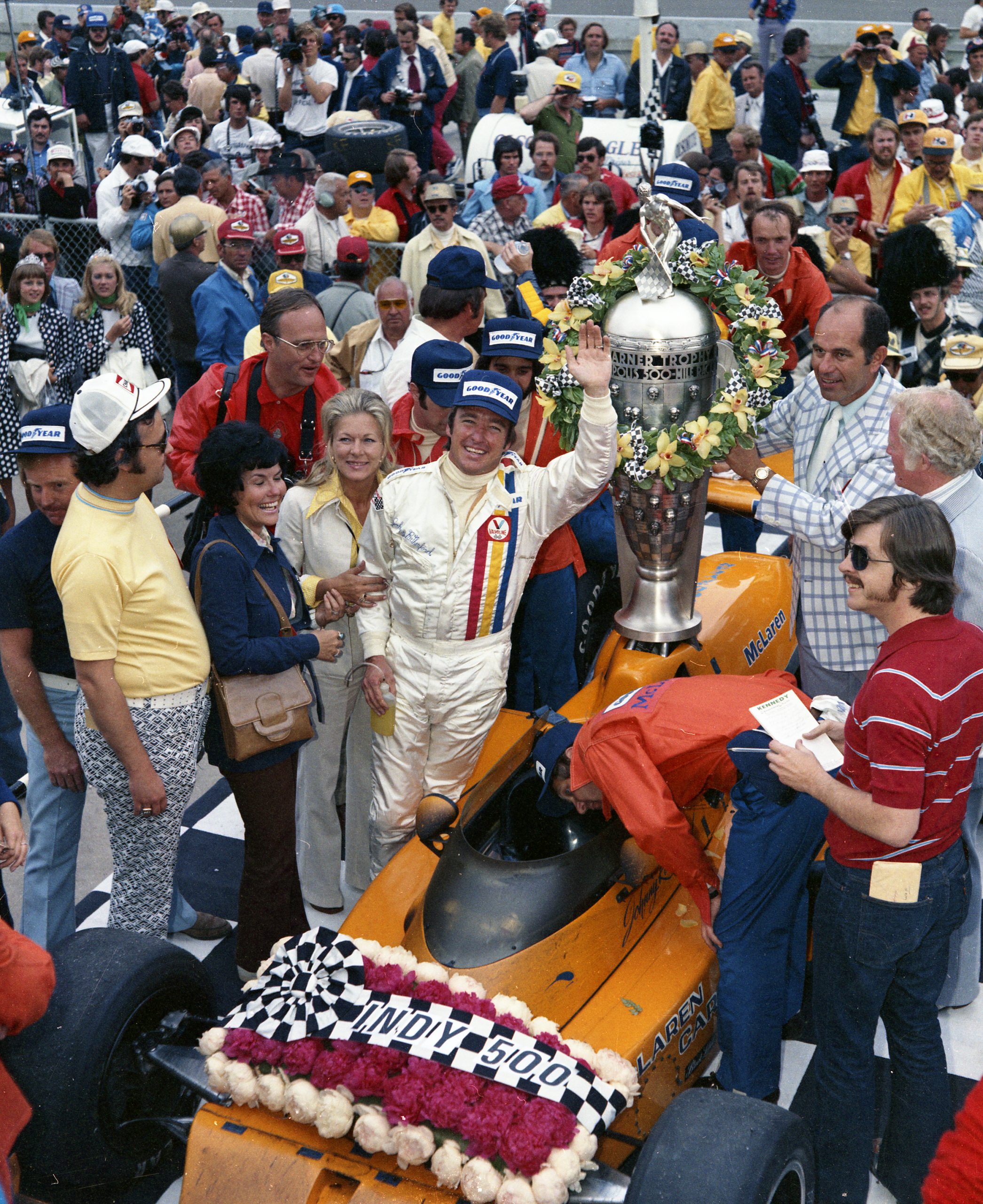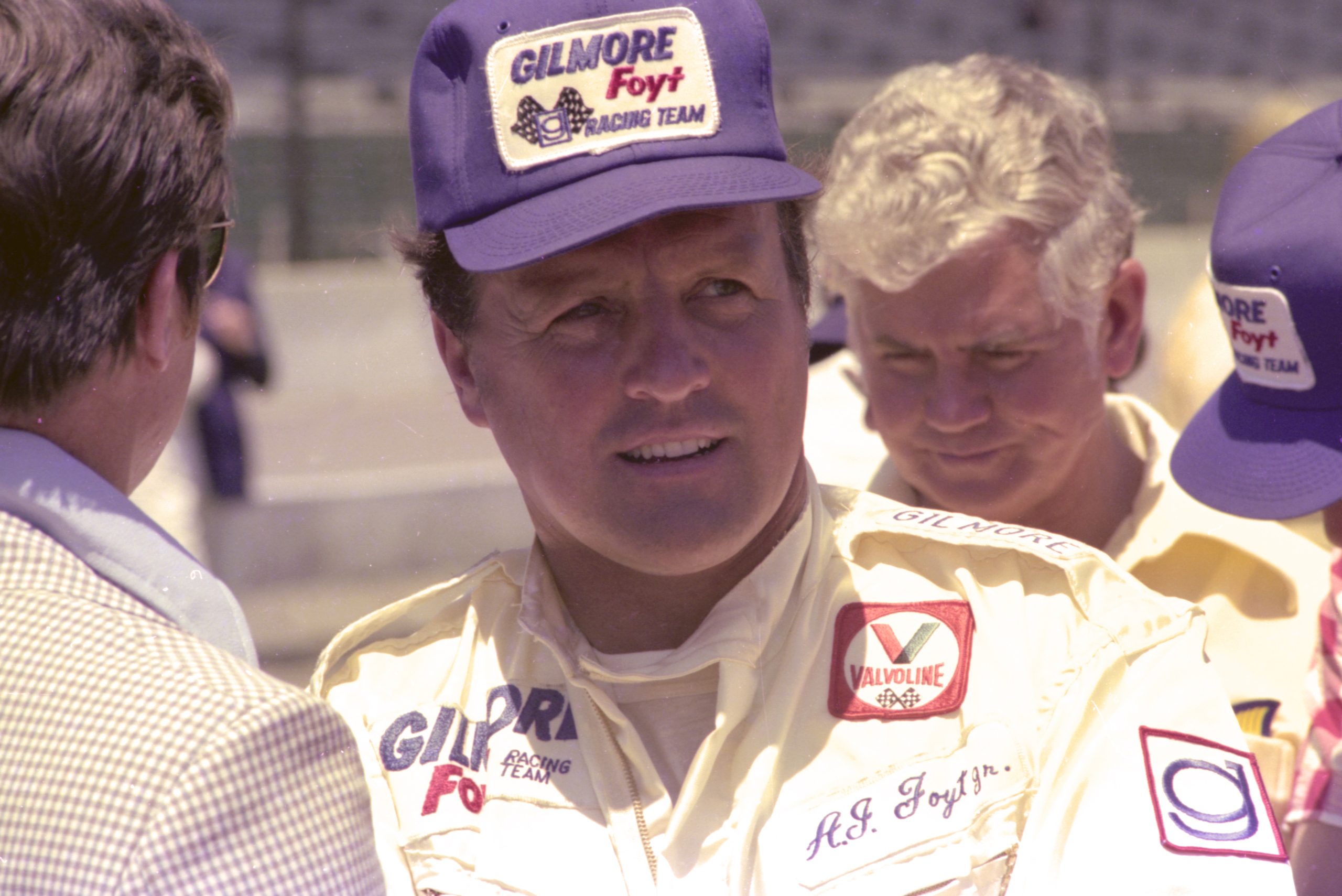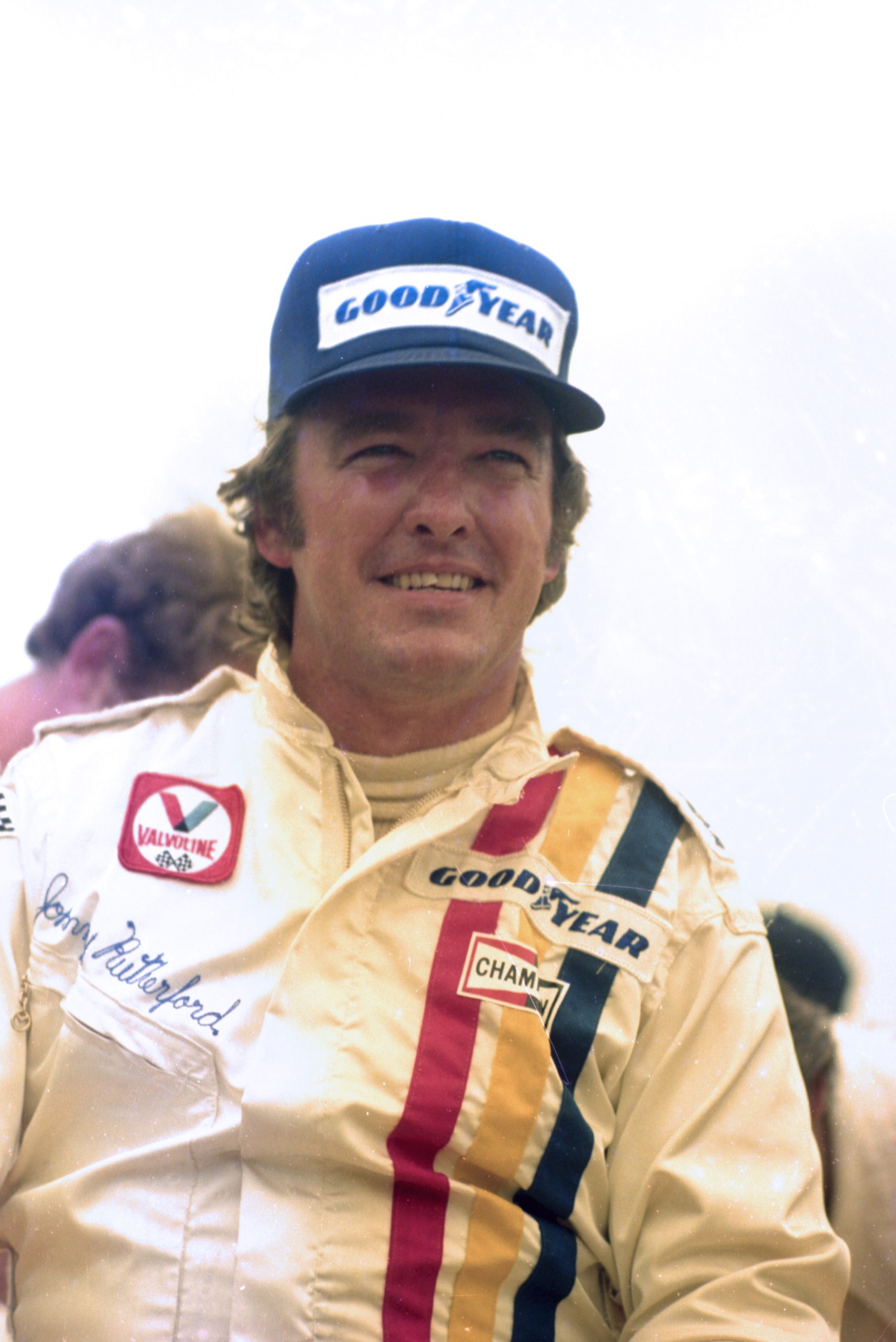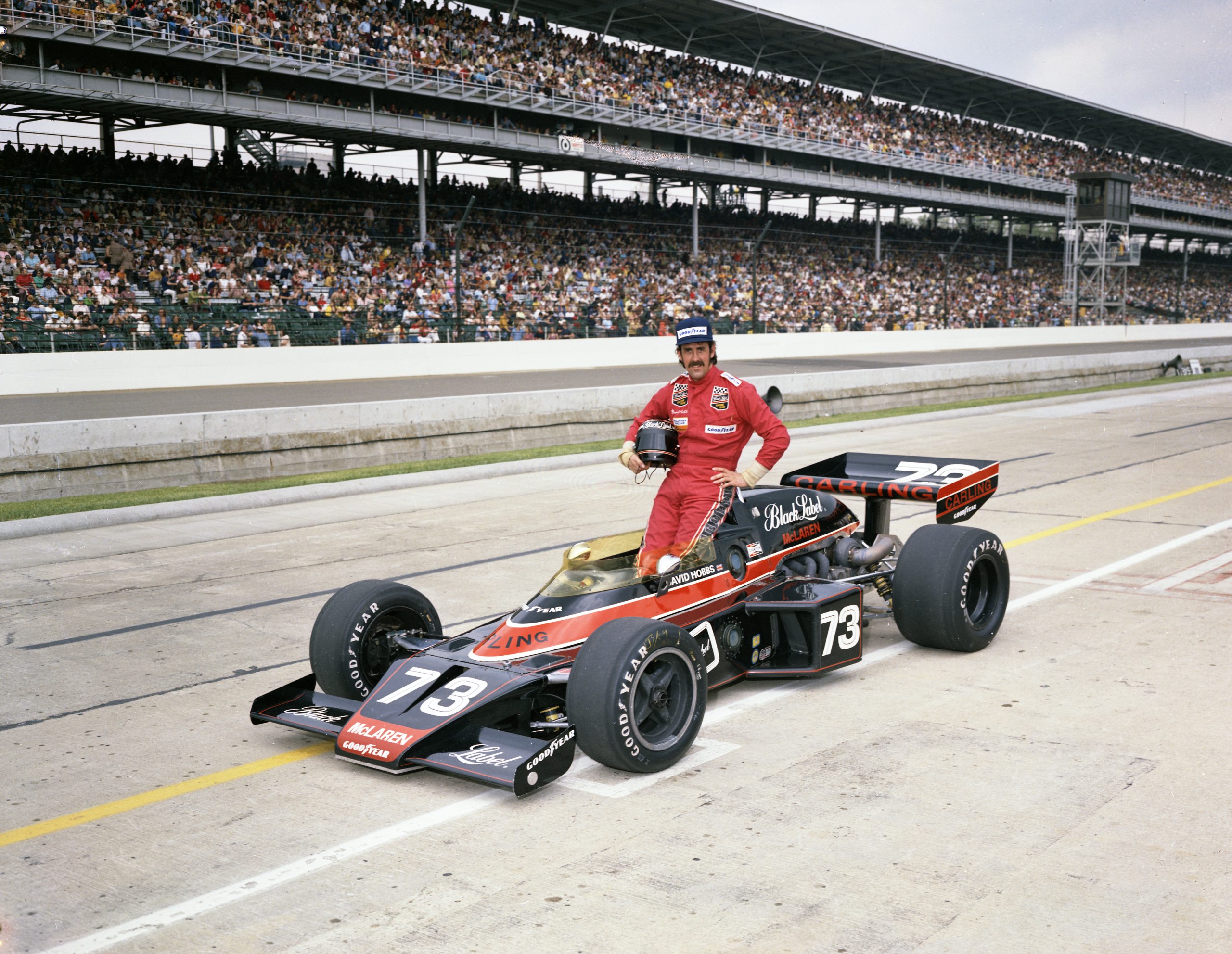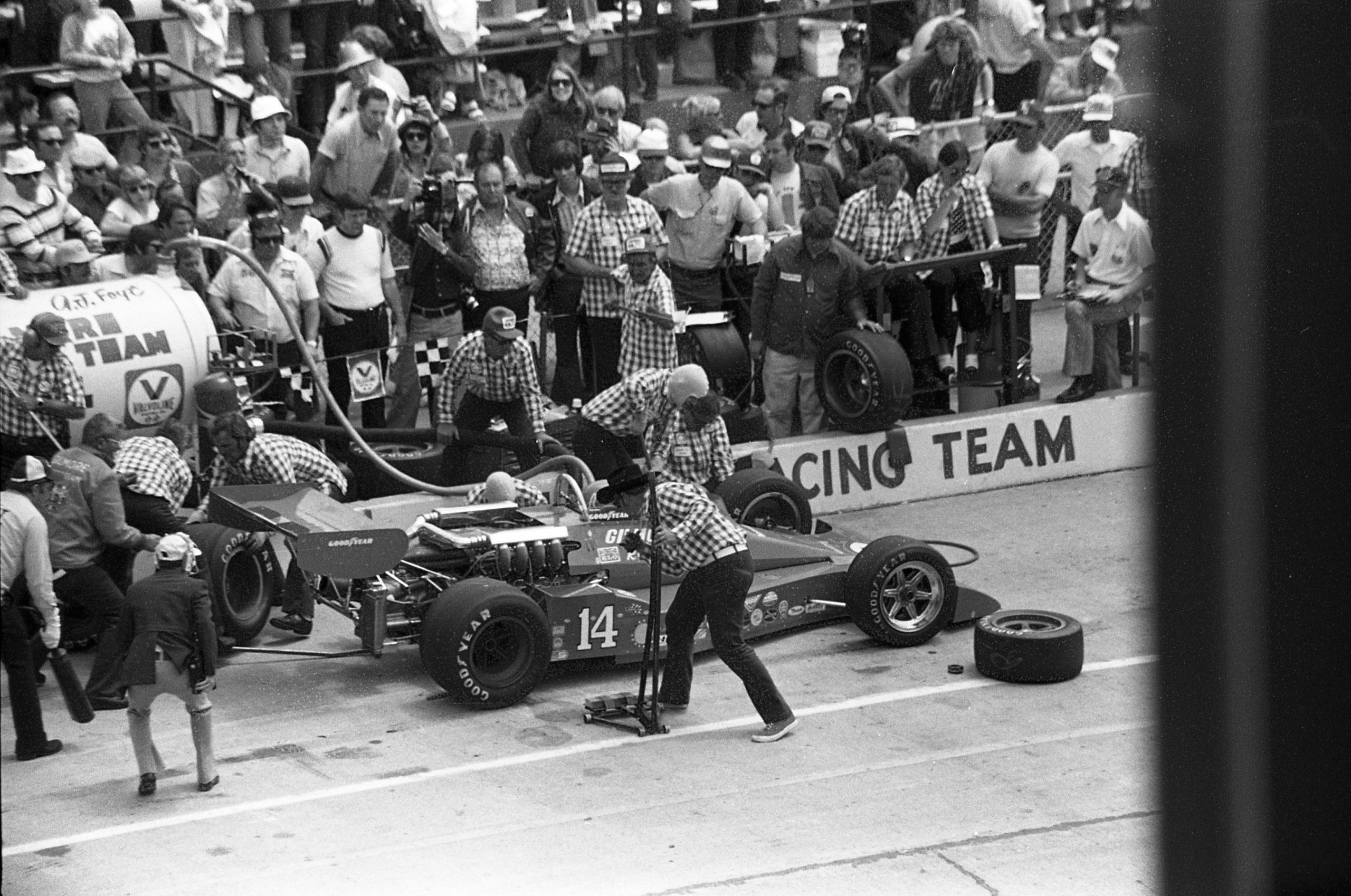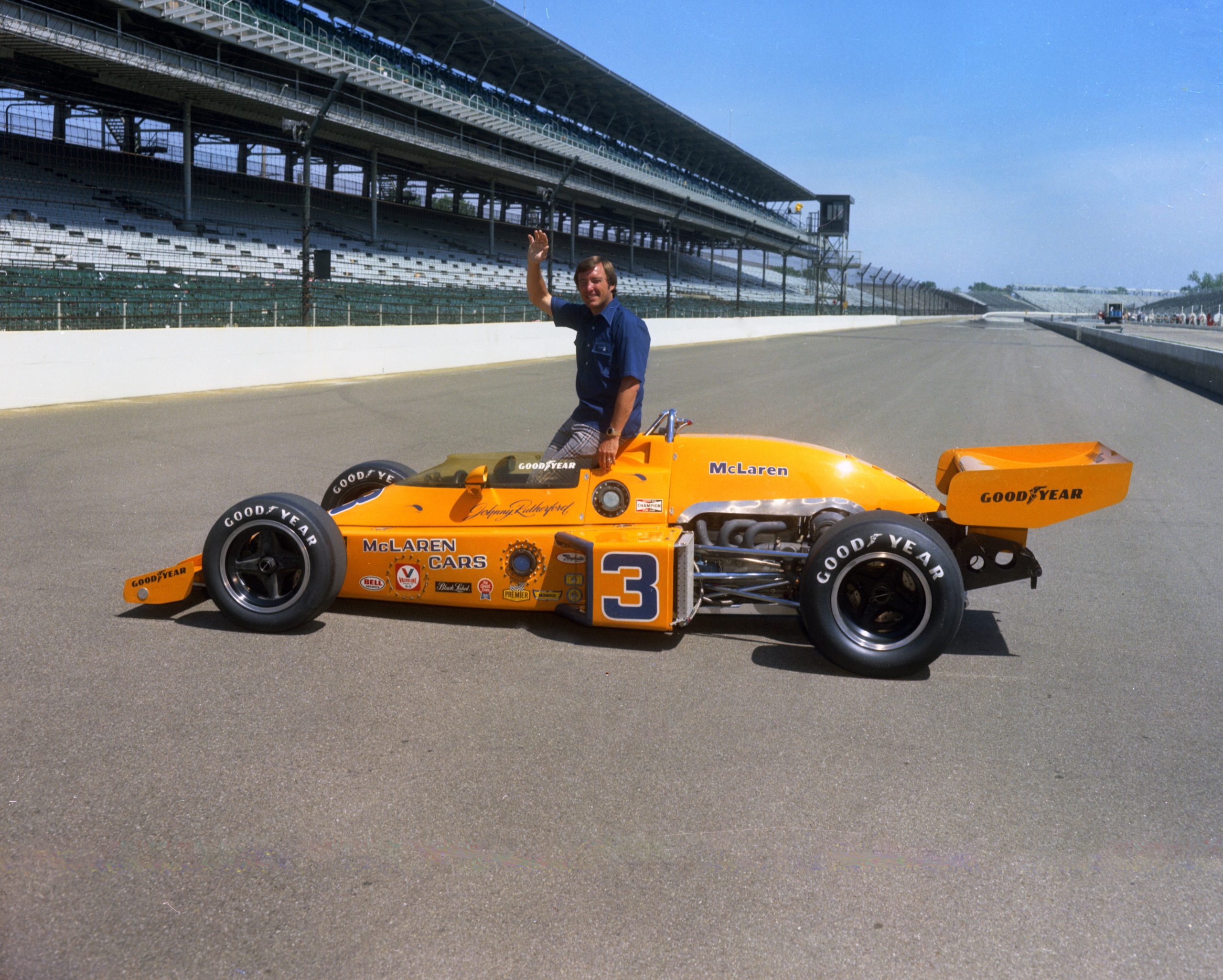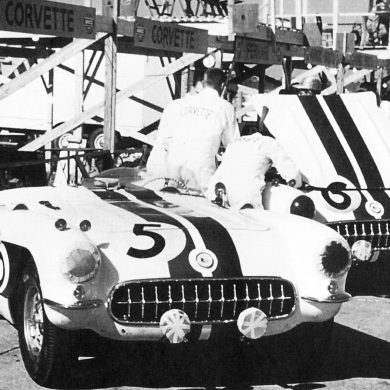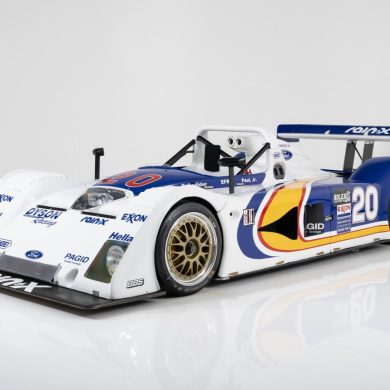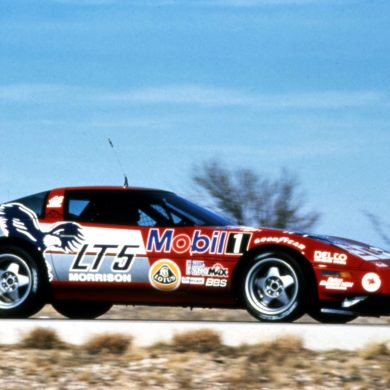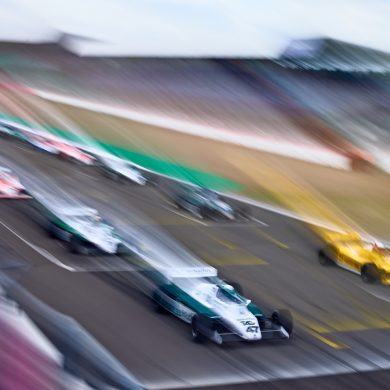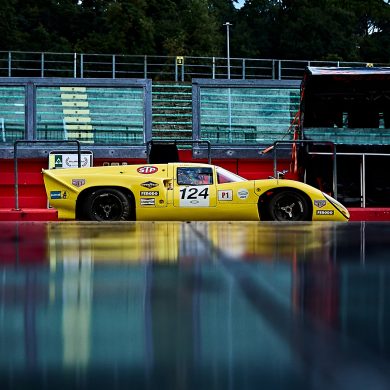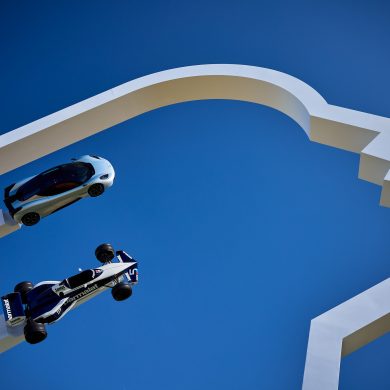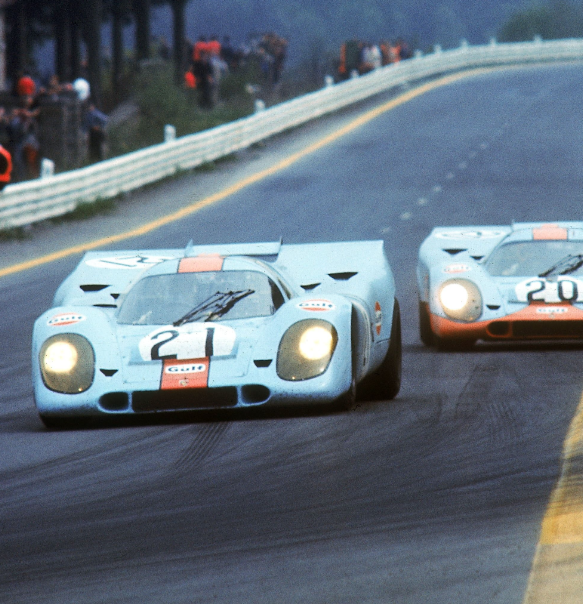On Sunday, May 26th, 1974, Johnny Rutherford won the 58th running of the Indianapolis 500-mile automobile race before a crowd estimated at 275,000 spectators at the Indianapolis Motor Speedway in Speedway, Indiana.
Piloting an Offenhauser-powered McLaren M16C/D chassis for Team McLaren, the 36-year-old victor from Fort Worth, Texas took the checkered flag in 3 hours, 9 minutes 10.060 seconds at an average speed of 156.589 mph—a full 22.32 seconds ahead of the All-American Racers Eagle 74-Offenhauser of 1968 winner Bobby Unser, who was the only other driver to complete the full 500-mile distance.
Rutherford earned a winner’s share of $245,031 from a then-record purse of $ 1,015,686 and led a dominant 122 of the 200 laps around the historic 2.5-mile racing circuit.
“You see this big race and as a youthful driver you get the opportunity to go run there and you start learning about the Speedway and what it means,” said Rutherford, who came to the McLaren effort in 1973. “To take that first checkered flag and win, it’s unbelievable. You almost have to pinch yourself. It’s one of the things you’ve dreamed of and you’ve finally achieved it.”
The victory also represented a third consecutive triumph and a record-extending 25th overall at the Speedway for the venerable Offenhauser engine which scored its inaugural trip to Victory Lane at Indianapolis in 1935.
Coming across the line behind Rutherford and Unser were 1973 runner-up Bill Vukovich Jr. in an Eagle-74 Offenhauser, defending champion Gordon Johncock driving another Eagle74-Offenhauser and Rutherford teammate David Hobbs in a McLaren M16C/D, as only 12 machines from the grid of 33 starting cars were able to finish the event.
“Running at Indianapolis is an incredibly important part of my racing career,” said Hobbs who made four starts at the Speedway between 1971 and 1976. “Indy is a magic word throughout the world, and to have competed there, and done a reasonable job has been incredibly satisfying. Even today when people ask about my days as a driver, when I say I drove at Indy, it has more weight than anything else about my career.”
Year of Change
May 1974 saw many changes come to the Indianapolis Motor Speedway in the interest of safety. Following the calamitous 1973 Indianapolis “500,” an event infamous for its poor weather, fiery accidents, spectator injuries and fatalities of both drivers and pit crewmen, the safety of spectators, drivers and competition personnel was at a premium.
Among the changes to the racing facility was the construction of a new timing and control tower at the start-finish line for the flagman and race officials. The structure, which stood in excess of 30 feet in height, now put the starter 15 feet above the track rather than at ground level as in previous years. The tower now gave greater visibility to officials and to drivers as to flag signals.
Inside and outside track retaining walls were heightened to a uniform height of 14 inches and the pit lane was lengthened more than 850 feet with a newly constructed pit apron and widened pit lane. All spectator seating at ground level was removed and the concrete retaining wall inside Turn 4 was eliminated and a new barrier was placed farther back, allowing drivers more recovery space in the event of a spin or loss of control.
Changes to the cars themselves included a trimming of rear wings from 55 to 43 inches, which reduced downforce and cornering speeds. On-board fuel capacity for the cars had been cut since the previous July from 75 to 40 gallons, with the majority of fuel to be carried on the left side of the car away from the outer retaining wall. Total fuel allotment for each car for the 500-mile distance was reduced from 375 gallons of methanol fuel in 1973 to 280 gallons in 1974. Additionally, a “pop-off” valve restricted turbocharger boost pressure to the engines which produced a corresponding drop in horsepower and helped lower escalating speeds.
“The biggest change between ‘73 and ‘74 was the reduction in fuel tank size and the limit on the amount of total fuel available,” Hobbs remembered. “The big difference was the fuel, as the weight between full and empty was very different. but 75 gallons compared to 40 is about 260 pounds so there is quite a difference in set up and spring ratios, etc.
“From a strategy point of view, it also made quite a difference, as fuel consumption is/was very much controlled by boost pressure, we ended up with about 25 gallons which we could have used, but towards the end I was fading a bit anyway, so more power may not have helped a lot.”
Race Day Lineup
With the changes in chassis aerodynamics and engine horsepower, the average speed of the starting grid for the 1974 Indianapolis “500” was 182.787mph—down more than nine miles an hour from the record of 192.392 mph established the previous year.
Leading the field to chief starter Pat Vidan’s green flag would be polesitter A. J. Foyt and his Gilmore Racing Team Coyote-Ford at an average speed of 191.632mph. The 39-year-old three-time winner from Houston, Texas, was seeking an unprecedented fourth victory at Indianapolis, having already triumphed in 1961, ’64 and ’67. The Texan was one of an exclusive group of four men to have recorded victory three times at the fabled Brickyard, which included fellow champions Louie Meyer, (1928, ’33 and ’36) Wilbur Shaw, (1937, ’39 and ’40) and Mauri Rose (1941, ’47 and ’48).
The 1974 race also represented Foyt’s third pole position at the Speedway, having previously accomplished the feat in 1965 and ’69.
“Foyt was a tough competitor, he raced you clean,” said Rutherford. “Foyt had an extra feel in a racecar. He could build his own engines, he could set up his own car. He was a tough hombre wherever you raced him. That race in ’74, I would get maybe half-way by him down the straightaway, and I would back off and let him go and have a clean corner to get in and he would have done the same for me.“
Joining Foyt on the front row would be 1973 California 500 winner Wally Dallenbach driving an Eagle 74-Offenhauser for Patrick Racing and third-year starter and 1972 Indianapolis “500” Rookie of the Year Mike Hiss, piloting a McLaren M16C-Offenhauser for Penske Racing.
The 1974 starting field featured seven rookies including future Indianapolis “500” winner and future two-time United States Auto Club national driving champion Tom Sneva.
Rutherford’s McLaren posted a qualification average of 190.446 mph which would be the second-fastest clocking in the field. However, since Rutherford was not among those eligible for the pole position when he made his four-lap, 10-mile qualifying run at 4:36 p.m. on Saturday, May 18th, the driver would have to begin the event from 25th starting position inside Row 9.
“The (McLaren) car was total,” said Rutherford about the car prepared by chief mechanic Tyler Alexander. “You could change what it was doing up front with the front wings, and you could change what it’s doing in the back with the rear wing and the different setups for weight-wise. It was just a good package. “
“I was an old sprint-car driver. I raced years in sprint cars and had success on the dirt. And I could run a little loose—the back end out a little bit. And it gives you an extra feel. And I think that was the thing about the M16—it was controllable when it came to the track or you could run it a little bit loose. “
The previous year of 1973, Rutherford had driven into the record books, by capturing his first career pole at Indianapolis behind the wheel of an Offenhauser-powered McLaren M16C chassis. The driver set new one- and four-lap marks of 199.071 mph and 198.413 mph respectively as Rutherford’s record clockings would prove to be the fastest ever officially recorded for an Offenhauser engine at the Speedway.
Rutherford recalled his McLaren in 1973, when unlimited turbocharger boost pressure to the Offenhauser produced prodigious horsepower.
“It was incredible. You could run the throttle flat on the floor and not have to lift. It was a good feeling to be able to harness that kind of horsepower under your foot. And the engine-builder we had at the time, he wasn’t sure, but he thought he could probably give it a number on the dynamometer of a little over 1,000 horsepower and maybe even 500 more horsepower than that. It was strong on the turbocharger. “
Race Day
For the first time in the history of the Memorial Day weekend classic, the Indianapolis “500” was held on a Sunday—allowing for a rain date window on Memorial Day Monday.
At the drop of Vidan’s green flag, Dallenbach assumed command as the Patrick Racing driver piloted his Eagle at a record pace for both opening lap (184.011 mph) and second lap (187.637 mph) before a broken piston on Lap 3 quickly ended the veteran’s day.
Early attrition took a heavy toll as nine machines fell out of the competition before reaching 100 miles.
Following Dallenbach’s demise, Foyt assumed the lead for the next 55 miles. Overall, the Texan, who was making a then-record 17th start at Indianapolis, would lead 70 circuits during the day and re-write the record books of the Speedway, as he set new race marks for 10,25,60 100 and 150 miles. Foyt’s Coyote chassis would be awarded with the Speedway’s the 1974 Louis Schwitzer Award, honoring engineering excellence and innovation.
As for Rutherford, the driver did not stay in 25th starting position for long as the McLaren chewed through the field.
“They dropped the green flag, and as I recall, in 12 laps, we were running third,” Rutherford recalled. “The car was fantastic. I just passed [cars] as I came to them. I got in close to Foyt, and we started our battle. “
“I remember Johnny passing me into Turn 1 and was really impressed by his speed in a similar car. Very educational,” said Hobbs, who won a Formula 5000 championship in 1971 and began the race from Row 3 with a qualifying average of 184.833 mph.
According to the driver from Upper Boddington, England, his race was marked by a key mistake and physical fatigue.
“My first mistake was to stop under green for a tire change, purely to get a bit more stagger in the tire, which in those days was a big part of set-up. It was a bad mistake which I should have thought through more, as it immediately put me a lap down. I should have stuck it out until a more opportune time.
“Also, towards the end my neck started to give out, G-loads were pretty high and I had not done much racing in ’74 so my neck was not up to full racing spec. I have always felt I should have been 3rd, I was faster than Billy Vukovich every day of the month including qualifying. I would probably not have beaten Bobby Unser and certainly not JR.”
An Oily Fate
The contest developed into a duel between Rutherford and Foyt as the three-time champion led five times during the day, while Rutherford went to the point on four occasions.
“Foyt and I had a good race, “Rutherford said. “I kept trying to get in position to take command and I didn’t want to put him in a situation where he might have a problem getting through a turn.
“He was running the former Ford, four-cam V-8 and it had a lot of horsepower. He was strong down the straightaways but I was a lot faster through the turns than he was.”
The battle reached its final stage on Lap 139 when the Foyt’s leading machine began blowing oil on the track, necessitating a black flag from race officials.
“I would stay a car-length or two or three behind him, I could pick him up any time I wanted to,” said Rutherford, who was right behind Foyt when the Coyote was stricken with misfortune. “And he started blowing oil–he literally covered me up with oil. I just backed off. I got clear back to where I didn’t have a problem and I could see any amount of it on the track and not get into it and spin.”
After pitting and returning to the track, the pole sitter was black-flagged a second time and would abruptly pull his machine directly into the garage area in Gasoline Alley and out of the competition. Credited with a 15th-place finish after completing 142 laps, Foyt’s attempt to become the first four-time winner at Indianapolis was thwarted by a broken scavenger pump.
“They black-flagged Foyt, he went in [to the pits] and I took the lead,” Rutherford said. “He came back out and we were together again and he dropped some more oil. It was just an incredible amount.”
With Foyt eliminated, Rutherford commanded 59 of the final 60 laps to the checker flag as the veteran would have his likeness engraved on the Borg-Warner trophy in his 11th start at the Brickyard.
During the final circuits, the winner became concerned about possible mechanical disaster.
“When you’re in that position, you start hearing funny noises or feeling vibrations [in the car],” said Rutherford. “I just hoped the car would stand. It was plenty strong all day. We backed off a little bit (in the closing stages). Coming down to the end you start trying to feel any problems that might develop because that’s 500 miles. Running that hard is really tough on the equipment.”
“J. R. was a complete dyed-in-the-wool, Indy is the only race in the world type of guy,” said Hobbs. “He was obsessed with it and was always fast there. That year he was untouchable. He and I and our two wives became good friends and we still are, but I don’t see him much these days, unfortunately.”
When Rutherford crossed the line only three winners in the first 57 editions of the event had ever started from father back in the field—Meyer in 1936, Fred Frame in 1932 and Ray Harroun in the inaugural race in 1911.
“I won the race, pulled into Victory Lane, and they had big, black and white checkered carpets [in the winner’s circle],” said Rutherford, who made 24 starts at Indianapolis between 1963 and 1988 and would repeat as champion in both 1976 and ’80. “The car sat there, and it had so much [of Foyt’s] oil sprayed on the front of it, that when the crew took the car off of Victory Lane, there was a perfect outline in oil, of the nose and the front wings of the McLaren on the carpet,” remembered the winner, while laughing at the memory.


